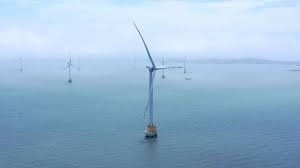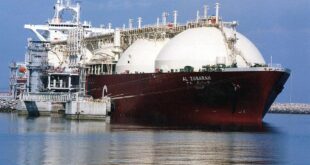Europe has been steadily ramping up its wind energy capacity in a bid to support a green transition and reduce its reliance on fossil fuels. In the last quarter of 2023, the region succeeded in producing more power from wind than coal for the first time, and it has since increased the number of wind farms.
In the Q3 of 2023, Europe generated a record 193 TWh of energy from wind turbines, compared to 184 TWh from coal plants. Wind power production stood at 20 percent higher than in the same period in 2022, despite several challenges contributing to lower-than-expected sectoral growth.
Europe’s wind energy capacity is expected to keep on growing as several governments introduce favourable climate policies and encourage private investors to develop new projects. Larger wind turbines and the relaxation of rules for the distance turbines must be placed from buildings have helped to double Europe’s potential for commercially viable wind power since a previous analysis was carried out seven years ago.
France and Spain alone could produce enough electricity equivalent to meet the EU’s 2050 energy demand forecast of 4,000 TWh, according to researchers at the Joint Research Centre (JRC). The new assessmentsees “substantially higher onshore wind potential” as many EU countries “double their installation capacity,” meaning, “onshore wind can play a much bigger role in the decarbonisation of Europe’s energy system than previously thought.” The report states that if deployed to its full potential, onshore wind operations could generate 19,000 TWh of electricity a year in the EU based on current rules.
The strong potential reflects the improvements made in wind turbine technology in recent years. The assessment shows that using 100-metre-high turbines instead of the 80-metre-high models could significantly boost a site’s energy generation capacity. A spokesperson for industry association WindEurope stated, “Bigger, more efficient wind turbines are the key to more electricity generation… reduces the number of turbines in a wind farm by 25 percent, while more than tripling the output of the wind farm.”
Scandinavia, Spain, France, Poland and Romania lead the EU in wind energy potential. While major wind energy-producing countries, such as Germany, have a lower production potential. This suggests that Europe would benefit from the development of cross-border transmission infrastructure to support energy sharing.
Several European countries are already developing wind projects intending to fulfil their potential. In France, 1.4 GW of new wind capacity was installed onshore and 0.5 GW of capacity offshore in 2022, increasing the country’s total wind power capacity to 20.9 GW. In February, Siemens Gamesa commenced construction on its $210 million La Havre factory expansion. The French government is supporting the development under its green industries policy with a 25 percent government tax credit. The extension will allow the company to produce the latest generation of 14 MW turbines for offshore wind projects. The turbines are equipped with 115-meter-long blades and are constructed from fibreglass, reinforced epoxy resin and balsa wood.
Yara Chakhtoura, Siemens Gamesa’s Managing Director for France, stated, “The investment announced today confirms the importance of our French production site as a strategic production facility for the growth of the offshore wind market. We are increasing our capacity by strengthening the skills and infrastructure we already have locally.”
In Germany, a recent report from the German Wind Energy Association and engineering foundation VDMA Power Systems showed that the country achieved record levels of onshore wind energy production in 2024. Germany licensed over 2,400 onshore wind turbines last year, with a combined capacity of more than 14 GW. However, there are fears that the sector’s expansion could be hindered under a new government. Friedrich Merz, the leader of the newly elected centre-right Christian Democratic Union (CDU) said last year that he thought wind turbines were “ugly” and hoped they would be dismantled eventually.
Dennis Rendschmidt, the managing director of VDMA Power Systems, stated, “… momentum needs to be kept up by a new federal government.” Rendschmidt added, “All the conditions are really set for future growth.” He suggested that the only thing that may impede sectoral growth is government intervention aimed at slowing expansion.
Meanwhile, in the Netherlands, wind energy production almost doubled between September 2023 and 2024. This has resulted in periods of surplus energy, with the potential to support green hydrogen production and other projects. Wind is expected to be the biggest source of energy in the Netherlands by 2050, with the government supporting both onshore and offshore wind farm development.
Europe is rapidly expanding its wind energy capacity in pursuit of a green transition. This trend is set to continue as the region aims to decarbonise at a faster pace, as well as reduce reliance on oil, gas, and coal. There is significant potential to develop both onshore and offshore wind across the region, which could ultimately benefit other clean energy sectors, such as green hydrogen.

 Iran Energy News Oil, Gas, Petrochemical and Energy Field Specialized Channel
Iran Energy News Oil, Gas, Petrochemical and Energy Field Specialized Channel



